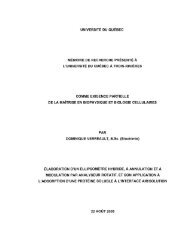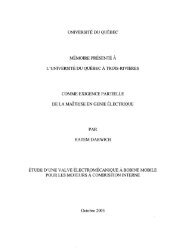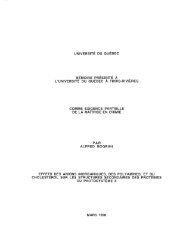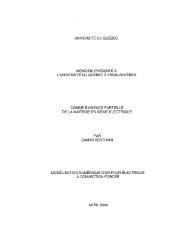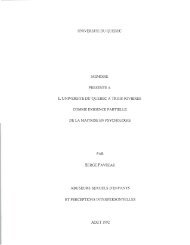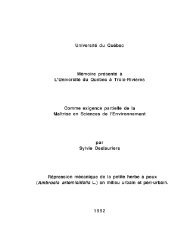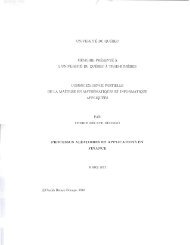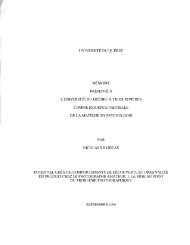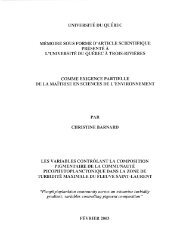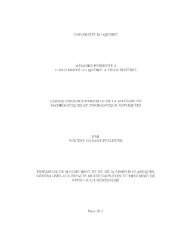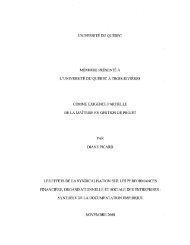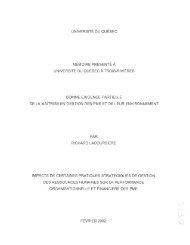Biomanipulation du meunier noir (Catostomus commersoni)
Biomanipulation du meunier noir (Catostomus commersoni)
Biomanipulation du meunier noir (Catostomus commersoni)
You also want an ePaper? Increase the reach of your titles
YUMPU automatically turns print PDFs into web optimized ePapers that Google loves.
after 6 years of white sucker mass removal and after the cessation of white sucker mass<br />
removal [lakes Mastigou and Claudette] or after 9 years of white sucker mass removal<br />
[Lake Des Îles]) as a flXed effect. Fish length and age were also used as fixed effects<br />
when necessary (fecundity and growth comparisons). A posteriori t tests were done<br />
between years when the results of the mixed-models identified significant effects of the<br />
mass removal. A Bonferroni correction was applied to control for multiple comparisons.<br />
When assumptions of normality and (or) homogeneity of variances were not met, the<br />
data were log transformed. If this proce<strong>du</strong>re was not successful, ANOV As were<br />
con<strong>du</strong>cted on rank-transformed data (Quinn and Keough 2002). AlI statistical analyses<br />
were performed using SAS version 8.2 software.<br />
3.3.5 Fish abundance and biomass<br />
To evaluate the impact of white sucker mass removal on species abundance, catch<br />
and biomass per unit of effort (CPUE and BPUE, respectively) were estimated from<br />
gillnetting. We tested for the effect of white sucker biomanipulation on CPUE and<br />
BPUE of white sucker and brook trout populations with a mixed-model ANOV A. To<br />
test for recruitment increase, the same analyses were used to compare the mean relative<br />
abundance (CPUE and BPUE) of 1+ white sucker and brook trout among years for<br />
which age data were available. Given the spawning season of each species and the time<br />
of mass removal, they were the first cohorts susceptible to show compensatory responses<br />
in recruitment after white sucker mass removal and 3 years after the cessation of white<br />
sucker mass removal.<br />
3.3.6 Growth<br />
White sucker age determination was done as described by Beamish and Harvey<br />
(1969). Transverse sections of the first three pectoral fin rays were cut using a Jem Saw<br />
45 (model #20-037, Raytech In<strong>du</strong>stries, Middlefield, CT 06457), then fixed to a<br />
microscope slide with Cytoseal 60 (Stevens Scientific, Kalamazoo, Mich.). For brook<br />
trout, scales were mounted between acetate sheets and plastic film directly in the field<br />
59



